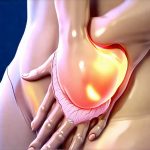Maintaining adequate hydration is fundamental to overall health, impacting everything from cognitive function and energy levels to digestion and organ performance. However, for individuals prone to urinary tract sensitivities – including those with recurrent UTIs, interstitial cystitis (IC), overactive bladder (OAB), or simply a history of irritation – the quest for proper hydration can feel fraught with challenges. Many commonly recommended fluids can exacerbate symptoms, leading to discomfort and avoidance of essential fluid intake. This creates a vicious cycle where dehydration worsens urinary tract health, while attempts to hydrate trigger painful flares. Understanding the nuances of different hydration sources and tailoring choices to minimize irritation is key to achieving comfortable and effective hydration.
The core issue isn’t necessarily how much fluid someone drinks, but what they drink. Traditional advice often centers on eight glasses of water daily, yet this “one-size-fits-all” approach fails to account for individual sensitivities and the potential impact of specific beverage components. Certain ingredients found in popular drinks – like caffeine, alcohol, artificial sweeteners, citric acid, and even high levels of vitamin C – can act as bladder irritants, triggering inflammation and discomfort. Therefore, a successful hydration strategy requires careful selection of fluids that are gentle on the urinary tract and promote overall well-being. It’s about finding personalized solutions, not adhering to rigid guidelines.
Gentle Hydration Options: Beyond Plain Water
While plain water remains the gold standard for hydration, it isn’t always sufficient or tolerable for those with sensitive bladders. Thankfully, a variety of other options can provide adequate fluid intake without triggering irritation. Herbal teas, specifically those formulated without bladder-irritating ingredients, are excellent alternatives. Chamomile and ginger tea (in moderation) are generally well-tolerated and offer additional health benefits beyond hydration. Coconut water provides electrolytes naturally and is often easier on the stomach than plain water for some individuals. Diluted fruit juices – such as pear or apple juice – can be included in small amounts, but it’s crucial to monitor tolerance and avoid citrus fruits altogether.
The key to incorporating these alternatives lies in mindful experimentation and observation. Keeping a hydration diary where you track what you drink and any associated symptoms can reveal individual triggers and tolerances. It’s also important to remember that temperature plays a role; many find cooler fluids less irritating than warm or hot beverages. Furthermore, sipping fluids consistently throughout the day is preferable to consuming large volumes at once, as it reduces bladder filling and pressure. Understanding hydration mistakes can help avoid further irritation.
Minimizing Irritants: A Beverage Breakdown
Certain beverages are notorious for exacerbating urinary tract symptoms. Caffeinated drinks – including coffee, black tea, and many sodas – act as diuretics, increasing urine production but also irritating the bladder lining. Alcohol is another significant culprit due to its diuretic effect and potential to inflame the bladder. Citrus fruits (oranges, grapefruit, lemons, limes) contain high levels of citric acid, which can be extremely irritating for those with IC or OAB. Artificial sweeteners found in diet sodas and sugar-free products are also known bladder irritants for many people.
Even seemingly innocuous beverages can pose a problem. Cranberry juice, often touted as a UTI preventative, is surprisingly acidic and can worsen symptoms in some individuals. Tomato-based juices and sauces contain high levels of acidity that can be equally problematic. Vitamin C supplements, while beneficial to the immune system, can also irritate the bladder when taken in large doses. The goal isn’t necessarily complete elimination but mindful moderation and awareness of personal triggers. Reading ingredient lists carefully and opting for natural alternatives whenever possible are crucial steps toward a bladder-friendly hydration strategy. Consider foods that alkalize the urinary tract to help balance acidity.
Identifying Your Personal Triggers
The experience of urinary tract sensitivity is highly individual. What irritates one person may not bother another, making personalized identification of triggers essential. A food and beverage diary is an invaluable tool for this process. In addition to recording what you drink, note any associated symptoms – urgency, frequency, pain, burning sensations – and the timing relative to consumption. This detailed record can reveal patterns and pinpoint specific beverages that consistently cause problems.
- Elimination Diet: Consider a temporary elimination diet where you remove common bladder irritants for several weeks, then reintroduce them one at a time to observe your body’s response.
- Professional Guidance: Consulting with a healthcare professional – such as a urologist or registered dietitian specializing in pelvic health – can provide tailored advice and support. They may recommend specific tests or assessments to identify underlying sensitivities.
Remember that symptom severity can vary based on factors like stress levels, hormonal fluctuations, and overall health status. Maintaining a consistent hydration strategy and proactively managing potential triggers are key to minimizing discomfort and improving quality of life. Planning fitness plans can also help avoid unnecessary stress on the urinary system.
The Role of Electrolytes in Bladder Health
Electrolytes – sodium, potassium, magnesium, and calcium – play vital roles in maintaining fluid balance and nerve function, but their impact on bladder health is often overlooked. Dehydration can disrupt electrolyte levels, leading to increased urine concentration and potential irritation. Conversely, consuming beverages high in electrolytes without adequate water intake can also exacerbate symptoms due to increased osmotic pressure within the bladder.
- Natural Sources: Prioritize obtaining electrolytes from natural sources like coconut water, bananas (potassium), leafy green vegetables (magnesium), and dairy products or fortified plant-based milks (calcium).
- Electrolyte Supplements: If supplementation is necessary, choose low-osmolar electrolyte solutions specifically designed for hydration. Avoid supplements containing citric acid or artificial sweeteners.
- Balanced Intake: Focus on balancing fluid and electrolyte intake to maintain optimal hydration without overloading the bladder.
Beyond Beverages: Hydrating Foods & Habits
Hydration isn’t solely about what you drink; it also encompasses the foods you eat. Many fruits and vegetables have high water content, contributing significantly to overall fluid intake. Watermelon, cucumbers, celery, lettuce, and berries are all excellent choices. Incorporating these hydrating foods into your diet can supplement beverage-based hydration and provide essential nutrients.
- Mindful Eating: Pay attention to portion sizes and avoid overeating, as excessive food intake can put pressure on the bladder.
- Regular Bathroom Breaks: Avoid prolonged holding of urine, as it can weaken bladder muscles and increase the risk of irritation.
- Pelvic Floor Exercises: Strengthening pelvic floor muscles through exercises like Kegels can improve bladder control and reduce urgency.
Ultimately, a holistic approach to hydration – combining strategic beverage choices, electrolyte balance, hydrating foods, and healthy habits – is essential for individuals seeking comfortable and effective fluid intake while managing urinary tract sensitivities. Don’t forget that morning drinks can set the tone for a bladder-friendly day.





















